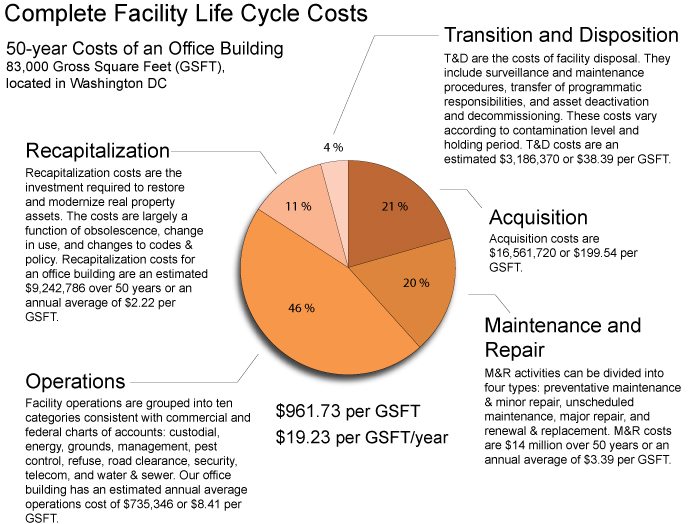Understanding facility life-cycle costs for a commercial building is the first step towards maximizing efficiency and positive outcomes.
Once this is accomplished, the next step, understanding LEAN construction delivery methodology, virtually assures an optimal “win-win” strategy for Building Owners, AE’s, Contractors, Subs, Business Product Manufacturers, Oversight Groups, Building Users, and Oversight Groups.
There are many components of life-cycle costs:
- First Costs – Planning, Selection, Acquisition, Construction
- Asset Maintenance (Routine, Planned, Preventative) of “movable” equipment
- Repair, Renovation, and Capital Renewal (major system/subsystem cyclical replacement)
- Adaptation (altering, updating spaces based upon functional needs)
- Operations (utilization, utilities, security, safety, sustainability, waste, cleaning, grounds management )
- Deconstruction, Transition, Disposition
LEAN Job Order Contracting is a collaborative, integrated project delivery method that can consistently assure that 90% of repair, renovation, and minor new construction projects on-time, on-budget, and meet required specifications. While this and other LEAN construction delivery methods and tools have been successfully deployed for decades, they have only recently begun to be applied to drive efficient life-cycle management of the built environment. An important challenge is the establishment of common terms, definitions, metrics, and ‘best-practices’. Changing basic work practices, however, is a more significant barrier. Greater levels of owner leadership and competency will be required before measurable sector-wide gains are achieved.

